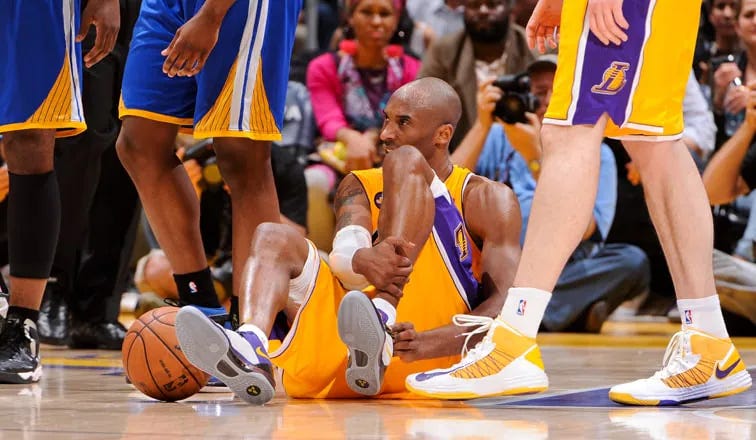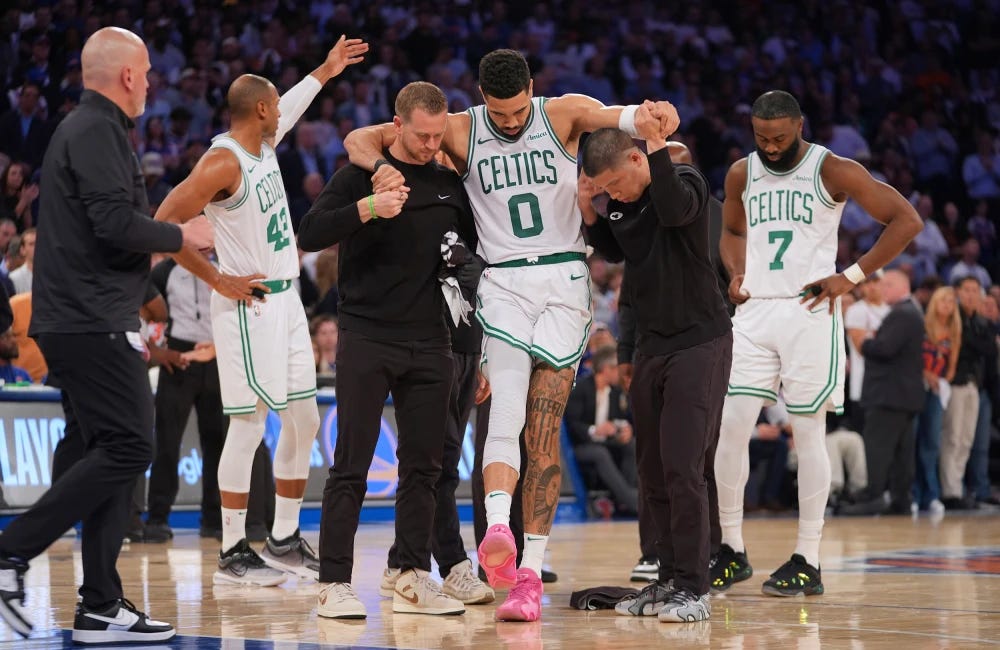Programming for Reactive Strength Point B in the Age of Future Shock
Absolute's Bottom-Up Strategy for a Bottom-Up Limiting Constraint on High Performance.

The Future Shock Is Now
Future Shock isn’t just a book—it’s the current reality in training science. Reactive strength—not absolute strength, not speed strength—is now the #1 limiting constraint on high performance in sport. And high performance staffs—that is: strength & clinical staffs—are experiencing exactly what the futurist Alvin Toffler predicted:
Disorientation caused by change outpacing system adaptation.
If Toffler’s name rings a bell, it may be from his intro to Order Out of Chaos by Ilya Prigogine—another core influence on the Absolute Conjugate Strategy. That book, like our programming strategy, deals with emergence in complex systems.
In our programming work we don’t use a system. We use a strategy—because systems are too slow in 2025 for high performance. Strategy operates in real time—right now.
The Limiting Constraint Has Changed—but the Field Hasn’t
The problem: Training science hasn’t adapted. The definitions and models still in circulation among performance staffs were built for a different limiting constraint: neurological output. And for decades, the bottleneck to high performance was the neural network of absolute strength. That limiting constraint has been solved.
Credit the Soviets for the methods
Credit the Bulgarians for pushing the absolute limits
Credit Louie Simmons for optimizing it
But we’ve moved on. The constraint is now biological, not neurological. It’s the bottom-up element of reactive strength that’s failing—and it's costing athletes their careers.
Deloading the CNS While Concurrently Detraining the Biology
We already know how to scale the neural network of absolute strength. That part of the equation has been solved. But most current programming is still not conjugate with the connective tissue network—the biological driver of reactive strength in force transmission scenarios that emerge at the level of competition.
Why? Because the field is still operating off outdated and inaccurate definitions. Even worse, many performance staffs are still copy-pasting powerlifting training templates into team sport contexts—without accounting for the biological demands of sport.
We love powerlifting. We love powerlifters. We love Louie Simmons. But let’s be clear: NFL linemen and powerlifters are both absolute strength athletes—but they are not the same athlete.
And if the athlete isn’t the same, the programming shouldn’t be either.
The biological prerequisites are different.
The neurological prerequisites are different.
It’s a different special strength entirely.
So why is the programming still the same?
Current Case Study: The NBA’s Reactive Strength Problem
Let’s look at the NBA. On the surface, their failing load management strategy makes sense:
Rest a healthy athlete
Let the CNS and neural network of absolute strength recover
Neural output returns via RSI improvement
But here’s what’s missing from a special strength perspective: What happens to the connective tissue network? It’s also being deloaded—concurrently. And because this network is biological, it’s highly sensitive to a lack of mechanical loading stimulus.
The top down neural network of absolute strength and bottom up connective tissue network of reactive strength operate on different timelines when it comes to programming an optimal strategy for reactive strength.
Neural Network Deload Timeline: 24 to 72 hours
Connective Tissue Network Detraining Time: ~6 hours
So under the NBA’s proposed loading strategy, when the athlete returns, their nervous system is closer to Point B—but their connective tissue is further away. Now you can see why the strategy is failing them. This mismatch systematically generates a neurological–biological asymmetry:
A nervous system at Point B. Connective tissue not at Point B. A rupture instead of reactive strength.
Watch James Wiseman—Game One, 2025
His Achilles rupture wasn’t random. It was the predictable result of a reactive strength deficit from incomplete programming. A neural network at Point B.
A connective tissue network far way from Point B. A routine change of direction—a standard relative strength force transmission scenario—resulted in rupture emerging instead of reactive strength.
And look at the timing. Game one. The athlete is, in theory, the most rested he’ll be all season. But from a bottom-up tissue perspective, he was nowhere near Point B reactive strength—the rupture occurred shooting a three…
You can't get more rested than game one. And yet, biologically, the connective tissue wasn’t ready. That’s not bad luck. That’s a programming for reactive strength failure.
This Is Not an Isolated Event
The NBA has a league wide reactive strength programming problem. And the return-to-performance data proves it: After suffering the an Achilles tendon injury, 36.8% of NBA athletes either retired or played fewer than 10 games for the remainder of their careers.
Why Load Management Is Failing the NBA: A Training Science Perspective
Load Management Is Failing the NBA
Get Out of Future Shock—Go Bulgarian on the Biology
It’s 2025. We don’t need better deload strategies. We need an entirely new approach—one that trains connective tissue the way the Bulgarians trained the CNS.
That’s why at Absolute, we’ve taken what we learned from them and built the Bulgarian Reactive Strength Strategy—a bottom-up solution for a bottom-up constraint.
Bulgarian on the Biology
Keep reading with a 7-day free trial
Subscribe to Absolute: The Art and Science of Human Performance to keep reading this post and get 7 days of free access to the full post archives.






